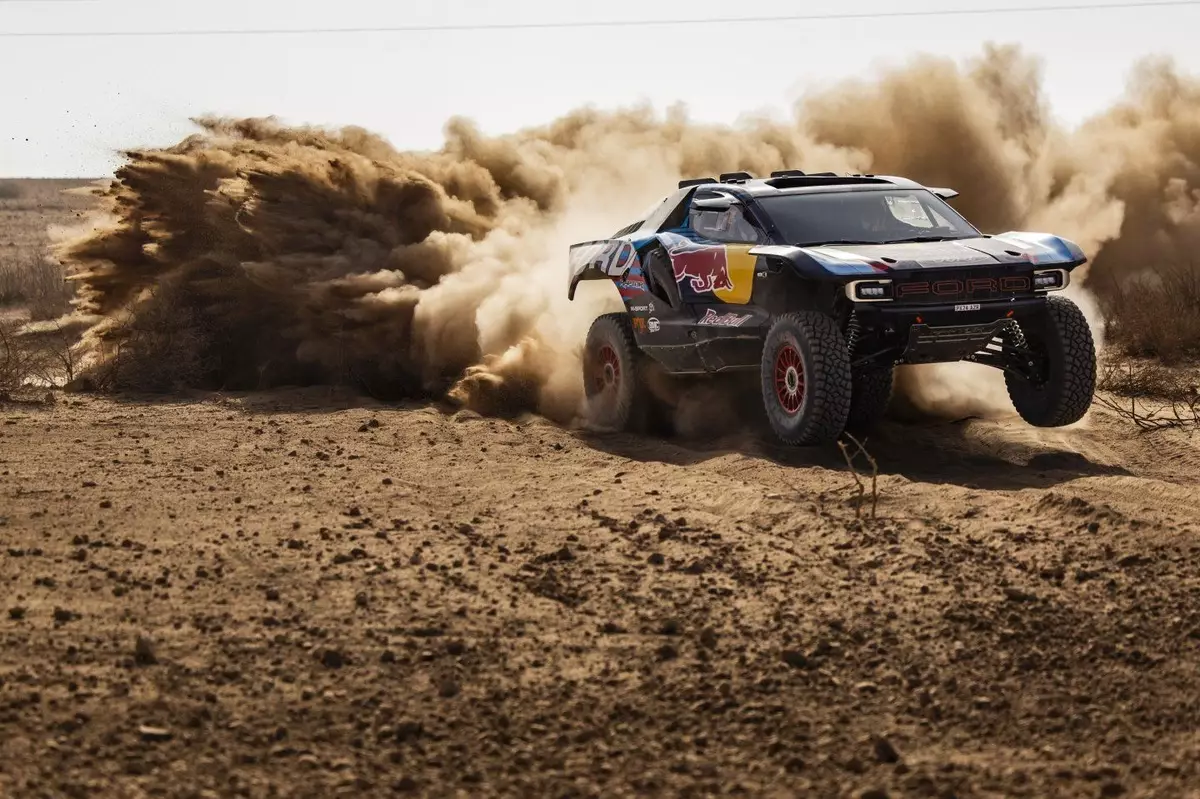The Dakar Rally, a grueling test of endurance and skill, continues to captivate motorsport enthusiasts worldwide. As one of its most celebrated figures, Carlos Sainz Sr. enters the 2023 edition with a transformative strategy and a shift in allegiance. This year, Sainz rides with Ford, driving the newly developed Raptor, which he believes will significantly change the dynamics of the race. His insights into the significance of tactics in rally racing are particularly noteworthy as competitors gear up for the challenges the Saudi Arabian landscape presents.
Historically, success in the Dakar Rally has hinged on a delicate balance of speed, navigation, and mechanical reliability. As Sainz prepares for his fifth rally victory, he emphasizes a strategic approach that diverges from the traditional competitive methods. “Tactics will be more important than ever,” he asserts, providing a fascinating perspective into the nuanced decision-making that competitors must embrace. Particularly, the concept of driving on compacted sand—an advantage coveted by those following behind—poses a unique rhythmic challenge where the order of the drivers significantly influences overall timing.
This year, Sainz anticipates that the viewing audience might witness unexpected behaviors from the drivers as they jockey for position, mindful of the tactical edge gained in the early stages of the rally. With five special stages lacking bike competitors due to differentiated routes, the landscape for strategy becomes even more pronounced. The intricacies of race timing and positioning may lead to peculiar tactics as drivers adjust their strategies on the fly, potentially impacting not only their performances but the overall outcome of the race.
The 2023 edition marks the Raptor’s Dakar debut, following its initial outing at the Rallye du Maroc. For Sainz, this moment is not merely a change in vehicle but a homecoming of sorts with M-Sport, rekindling a relationship forged through success in World Rally Championships. With two previous tenures with Ford under his belt, Sainz is intimately familiar with the brand’s ethos and hopes that this familiarity translates into competitive advantages during the race.
Despite a promising showing in Morocco, Sainz remains pragmatic. His caution serves as a reminder that every new project, regardless of prior success, brings uncertainties. “We have to wait and see how we go in this race,” he reflected, insinuating that adaptability is key in the unpredictable environment of rally racing.
As the excitement mounts, Sainz identifies Stage 2 as potentially the most demanding segment of the Dakar Rally. Spanning nearly 1000 kilometers, the stage poses both a physical and mental challenge, compounded by the absence of immediate support. “In the 48-hour stage, something is going to happen, 100%,” he forecasts, signaling the importance of self-reliance amid adversity.
This lends itself to a broader understanding of the psychological aspects inherent in endurance racing. The mental fortitude required to navigate long distances without mechanical assistance can make or break a competitor. Sainz emphasizes the critical nature of completing stages without major issues, particularly when countless kilometers lie ahead without immediate recourse. The mental preparation and contingency planning could be the differentiators between success and failure in such a daunting test.
As Carlos Sainz Sr. gears up for yet another battle at the Dakar Rally, his emphasis on strategy, adaptability, and mental resilience paints a compelling picture of what it takes to triumph in this brutal contest. With the Ford Raptor at his helm and the experience backing him, Sainz embodies the spirit of innovation and tradition—a combination that could once again secure him a coveted place in Dakar history. The race ahead promises to be an exhilarating testament to the drivers’ tactical acumen, where every decision could lead to glory or heartbreak in the unforgiving Saudi landscape.

